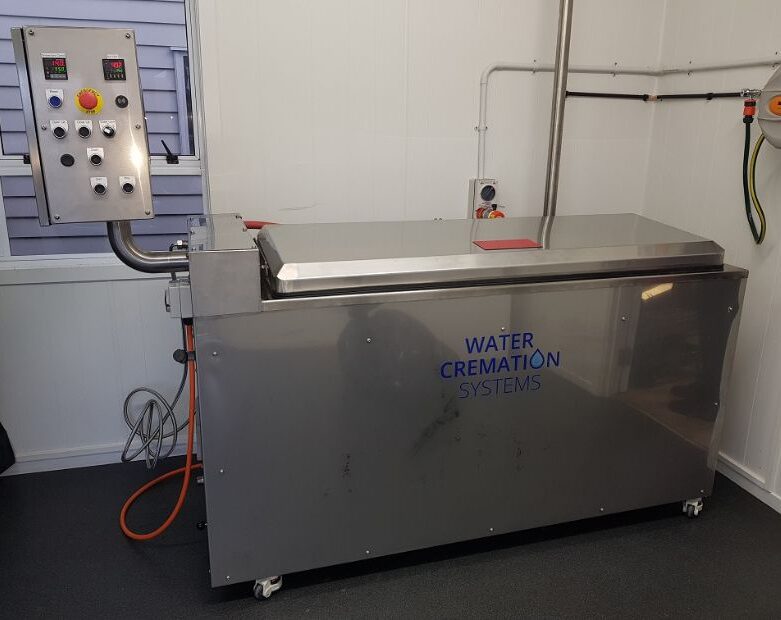Alkaline hydrolysis is the process used in water cremation, which is an alternative to traditional cremation. Rather than parting with the deceased in incinerators, like traditional cremation methods, water cremation uses a water solution to hasten the decomposition process.
Here, we explain the alkaline hydrolysis process, along with its advantages.

What is alkaline hydrolysis?
In the alkaline hydrolysis process, the body is first placed in a vessel within the alkaline hydrolysis machine. The vessel is then filled with an alkaline solution (until the body is submerged), which is a mixture of water and alkaline chemicals such as potassium hydroxide.
The liquid is then heated, which breaks down the body into its chemical components. The level of temperature and chemicals will determine the length of time the process takes, with higher levels resulting in faster decomposition rates.
The body is reduced to a quantity of liquid and porous bone fragments, with the liquid then transferred to a heat exchanger vessel, where it is neutralised and cooled.
Once treated and cooled, it can be disposed of as sterile wastewater, recycled, or used as fertiliser because of its nutrient-rich content. The remaining bone fragments are then rinsed, dried and ground, so they can be returned to the families.

The advantages of alkaline hydrolysis
Did you know that the traditional cremation of an average-sized dog releases approximately 45kg of CO2 into the atmosphere?
These harmful emissions result from the combustion process used in traditional cremation, whereby a casket and remains are incinerated at a high temperature in a closed chamber. This process produces a number of harmful emissions and organic pollutants.
Water cremation is an environmentally friendly alternative; it leaves about a tenth of the carbon footprint of traditional cremation and releases zero emissions from the body itself, which would occur from a standard burial.
This is because the water cremation process reduces remains to a quantity of liquid and porous bone fragments, rather than fumes as in traditional cremation.
The liquid is then treated to become sterile wastewater, which can be disposed of, recycled, or used as fertiliser because of its nutrient-rich content. The energy required for the water cremation process is also drastically reduced, using 85% less energy than traditional cremation.
Our water cremation systems also reduce the time and cost associated with traditional methods, offering a more affordable and effective alternative.
Get in touch with Water Cremation Systems
We’re just a phone call away. Contact us to discuss your water cremation needs.


